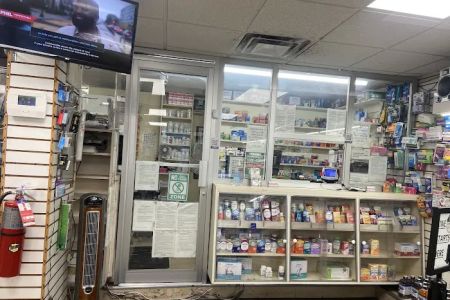Understanding Pharmacy Insurance Verification and Billing Assistance
As a pharmacy professional, one of the most crucial aspects of ensuring smooth business operations is navigating the complex world of insurance verification and billing. Whether you are managing a local pharmacy or overseeing a chain, understanding how insurance verification and billing assistance work can significantly improve your efficiency and minimize errors. In this article, I'll walk you through the process, challenges, and effective solutions available to pharmacies in the United States. Let’s dive in!
The Insurance Verification Process in Pharmacies
Insurance verification is one of the first steps in ensuring that a patient's prescription is covered by their health insurance provider. It’s vital for pharmacies to confirm that the insurance details are accurate and up-to-date before dispensing medications. Without this crucial step, the pharmacy might face delayed payments or rejected claims, which can cause financial strain.
When a patient presents their insurance information, the pharmacy staff needs to verify that the medication is covered under the patient's plan, and determine what portion of the cost will be paid by the insurance company and what the patient must pay out of pocket. This often involves contacting the insurance provider, checking the patient’s benefits, and confirming any necessary co-pays, co-insurance, or deductibles.
In my experience, the key to effective insurance verification is attention to detail. A missed verification step can result in rejected claims or delayed payments. For instance, I once had a situation where a patient’s insurance plan had recently changed, and the prescription was no longer covered under the old plan. The issue was caught early thanks to thorough verification, preventing a major billing headache later on.
Pharmacy Billing Assistance: How It Works
Billing assistance is just as essential as insurance verification when it comes to ensuring that pharmacies receive timely and accurate reimbursement. Once insurance verification is complete, the pharmacy needs to submit claims to the insurance companies. Billing assistance involves the entire process of submitting these claims, following up on any rejected claims, and ensuring that payments are made correctly.
Many pharmacies rely on specialized billing software or third-party services to streamline the process. These tools help track claims, manage patient information, and follow up on any issues that may arise. For example, if an insurance company rejects a claim due to an error, a billing service can quickly identify the problem and resubmit the claim with the correct details.
Personally, I’ve found that integrating automated billing systems has significantly reduced human error and increased reimbursement speed. The software flags potential issues, such as missing information or incorrect codes, allowing for faster resolution and fewer denials. But even with the best technology, there are still instances where having a dedicated billing team is invaluable. I once worked with a billing assistant who was able to resolve a claim that had been sitting in limbo for over a month simply by making a quick follow-up call. Sometimes, it’s that personal touch that makes all the difference!
Common Challenges in Pharmacy Insurance Verification and Billing
While the insurance verification and billing process is essential, it is not without its challenges. As pharmacies face increasing pressure to process claims efficiently, several common problems can arise. Let’s explore these issues and how pharmacies can tackle them effectively.
Denied Claims
Denied claims are one of the most frustrating aspects of pharmacy billing. They can happen for many reasons, including incorrect patient information, coding errors, or medications not covered by the insurance plan. When a claim is denied, it can delay payment and impact cash flow.
To address this issue, it’s essential to keep thorough records of each claim submission. Having accurate patient data and insurance details is key. Additionally, timely follow-up with the insurance company is necessary to resolve issues. In some cases, a simple clerical error may be the root cause of a denial, so always double-check the claim before submitting it.
Insurance Network Changes
Another issue many pharmacies encounter is when patients change their insurance networks or plans. This can lead to confusion, as a medication that was once covered might no longer be reimbursed by the new provider. This change often happens without the patient being fully aware, and it can lead to unexpected out-of-pocket costs.
In these cases, effective insurance verification can help mitigate the problem. Ensuring that the pharmacy team stays informed about insurance networks and updates is crucial. Additionally, establishing a clear line of communication with patients helps to avoid surprises when their insurance coverage changes.
Keeping Up with Complex Billing Codes
Pharmacy billing codes can be intricate and subject to change. Staying on top of the correct codes and billing requirements is a continuous challenge for pharmacies. Using up-to-date billing software that automatically updates codes can help alleviate this burden.
Moreover, taking the time to train pharmacy staff in the latest coding requirements can minimize errors and ensure that claims are processed accurately. I’ve seen firsthand how a small mistake in coding can result in delayed or rejected payments, which is why ongoing education is key to success in pharmacy billing.
Solutions and Best Practices for Streamlining Pharmacy Insurance Verification and Billing
To tackle these challenges effectively, pharmacies must adopt best practices for insurance verification and billing. Here are some solutions I’ve found to be particularly effective in streamlining the process:
1. Use Automated Billing Software
Automating the billing process with dedicated pharmacy software can significantly reduce errors and improve efficiency. This software can help manage claims, verify insurance information, and flag potential issues before they become problems. The automation of these tasks also saves valuable time, allowing pharmacy staff to focus on patient care and other important tasks.
2. Train and Educate Staff Regularly
Pharmacy staff must be continuously educated on the latest insurance regulations, billing codes, and verification processes. Regular training ensures that all team members are equipped with the knowledge necessary to handle complex billing tasks and address issues as they arise. I’ve always found that investing in staff training pays off in the long run, both in terms of efficiency and fewer mistakes.
3. Build Strong Relationships with Insurance Providers
Having a good working relationship with insurance companies can make a huge difference when resolving issues. When problems arise with claims or payments, being able to contact an insurance representative directly can help speed up the resolution process. Maintaining open lines of communication and being proactive in addressing issues helps prevent delays and complications.
4. Be Transparent with Patients
Clear communication with patients about their insurance coverage is essential. Informing them about any potential out-of-pocket costs or changes in coverage can help avoid surprises at the pharmacy counter. Additionally, offering payment plans or alternative options for patients who face high co-pays can enhance customer satisfaction.
Conclusion
Pharmacy insurance verification and billing assistance are crucial aspects of running a successful pharmacy. By understanding the process, addressing common challenges, and implementing effective solutions, pharmacies can ensure smooth operations and timely reimbursement. Embracing technology, staying informed, and building strong relationships with patients and insurance providers are key to overcoming hurdles and ensuring a steady stream of revenue.














